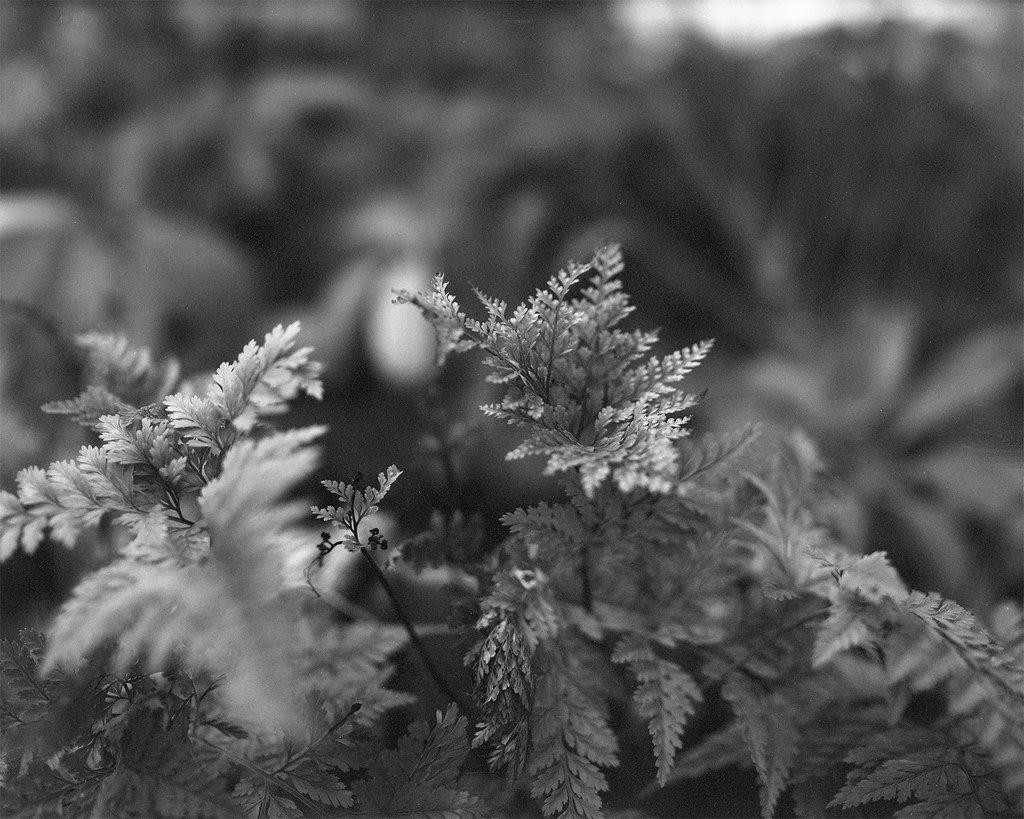In my post
Fern Leaves, I said, "
I exposed for 1/10th of a second as metered (no compensation for filter or bellows extension)". And that is true, but that is not the meter reading for the photo I showed in that post. I took two exposures that day. One was as metered f/5.6 x 1/50th and the other one included 2.5 stops for the filter and 1/2 stop for the bellows (that was just a guess, I didn't calculate it). It came out to f/5.6 (to keep the same DOF) and 1/10th. I know that's not exactly 3 stops, but I knew the film would have enough latitude to tolerate 1/3 stop either way. I remember thinking at the time "Three stops seems like a huge difference for one little filter and a bit of bellows extension.", but I went ahead and made the exposure, just in case the experts really do know what they are talking about. I developed both negatives together using recommended times and agitation. When I took the negs out of the tank, one was 'normal' looking and the other was very very 'thin'. That is to say, it was mostly clear with just a hint of an image on it. I said to myself with a feeling of satisfaction, "See? That filter and bellows compensation is all a bunch of nonsense!" and didn't give it another thought. I didn't think it through until I went to scan the thin negative last night. Then I thought about it. A thin negative is either under exposed or under developed. I know the development was fine since all of the other negatives came out perfectly. So that must mean that the thin one was under exposed. That must have been my 1/50th exposure. The experts were right!! I really do need to add stops for the filter and the bellows extension. So, lesson learned, and it only took me one sheet of film to learn it. Even then, it's not a total waste. I threw the negative on the scanner and figured I would get something... maybe even something interesting.
What I got was what you would expect from a severely underexposed negative... grain and contrast. It is still a decent image. It just has a little more 'edge' to it than the other exposure. I thought it was an interesting 'experiment'. Go see the
Filter Factor article on Wikipedia for an explanation of how it works and a good chart of different filter factors for different brands of filters.
Which version do you like better?


No comments:
Post a Comment